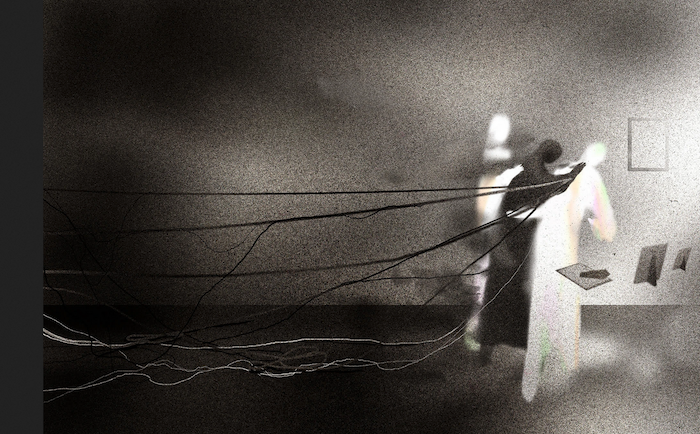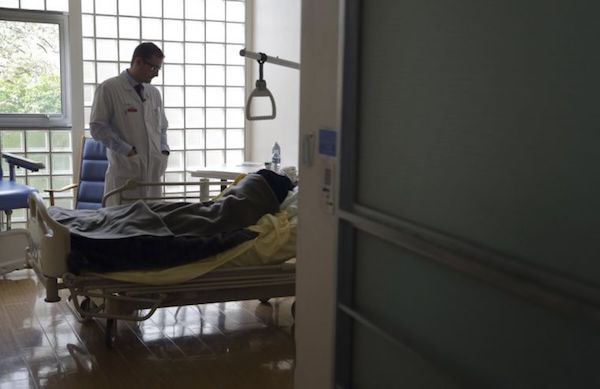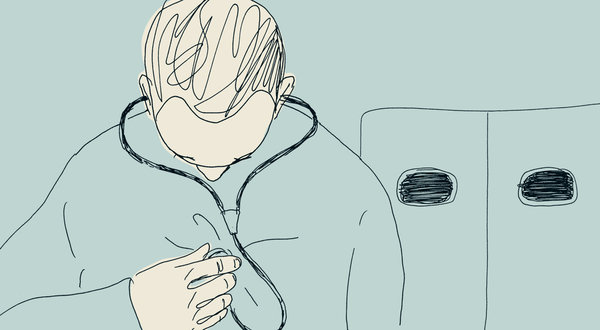Some hospitals and hospices have policies that forbid nurses to be part of the process or even to discuss end-of-life options.
By Emilie Le Beau Lucchesi
When Ben Wald, 75, was dying of cancer in 2012, he wanted to use Oregon’s Death with Dignity Act to receive a prescription for a lethal medication that would end his life. His hospice nurse, Linda, was part of the discussion and provided both information and support, said his wife, Pam Wald, of Kings Valley, Ore.
His colon cancer had spread to his lungs, and his weight dropped from 180 to 118 pounds. He struggled to speak or eat.
When he was ready to end his life, the couple wanted Linda with them, but the hospice organization she worked for did not allow it, Mrs. Wald said. The organization allowed other hospice workers, such as social workers and massage therapists, to be present, but not the doctors or nurses it employed.
Without a nurse present, Mrs. Wald was going to be alone with her husband when he died. She wanted someone knowledgeable to support her through the process. She reached out to Compassion & Choices, a national advocacy group for aid in dying. The group paired her with two volunteers, one of whom was a retired intensive care nurse.
“You watch your husband die and you hear that change in breathing,” Mrs. Wald said. “Jane, the I.C.U. nurse, she said, ‘The breathing changes. You’re doing fine, Pam. Keep holding his hands.’”
As access to aid in dying expands this fall, one in five Americans will live in a state that permits legal aid in dying.
But many may still run into the problem the Walds had, because some hospitals and hospices see medical aid in dying as conflicting with their traditional mission of protecting life and avoiding harm to patients. Those that are faith-based typically follow church policy against medical aid in dying.
Some have policies that forbid nurses even to discuss end of life options. Others hold a “neutral” stance on aid in dying, but bar doctors or nurses from being in the room while a patient self-ingests the medication and begins the dying process.
In June, the American Nurses Association passed a position statement providing guidance on the nurse’s role in medical aid in dying, said Liz Stokes, the director of the American Nurses Association Center for Ethics and Human Rights.
“We want to be clear: Nurses absolutely do not have to be present or provide that comfort if they feel they have a moral or religious objection. Our code of ethics states they have the right to object,” Ms. Stokes said.
But for those who wish to support their patients, the new statement defines key words such as “participation” and “presence.” These definitions are meant to encourage organizations to be clearer in terms of a nurse’s ability to answer questions during the decision-making process or offer support in the final moments.
Currently, Ms. Stokes said many company policies are vague and difficult to interpret. Even terms like “to witness” or “to be present” may be open to interpretation. Ms. Stokes said the association has received inquiries from nurses wondering if covering their eyes qualified as not witnessing.
A 2014 study in the Journal of Pain and Symptom Management analyzed 30 policies from members of the hospice and palliative care organization in Washington, where aid in dying has been available since 2009.
Of the policies analyzed, 78 percent prevented nurses or other staff members from being present during or after the prescription was taken. The authors described the policies as “relatively silent” about the rationale for their decisions, but some referred to medical aid in dying as being “outside the scope of hospice practice.” Others did not want to be seen as “taking sides.”
The hospices that allowed staff members to be present made note of the core hospice value of not abandoning patients.
The study found that although the policies tend to be vague, there is a clear distinction between the role of the physician and that of the hospice. Physicians who write the prescription might not be employed by the hospice and therefore not subject to the organization’s particular policies. Policies note that physicians have a responsibility to respond to any complications that might occur after the prescription is ingested.
Each jurisdiction that permits medical aid in dying publishes annual reports on who took the medication, and why, where and whether medical practitioners were present.
In California’s report for 2018, only 54.3 percent of aid in dying patients were reported to have a medical care provider present at the time of ingestion. In Oregon’s 2017 report, only 33 percent of patients did. Many of these medical providers did not remain at the bedside, and 70 percent of patients in Oregon did not have a provider present at the time of death.
Keith Seckel, a registered nurse in Corvallis, Ore., believes it can be helpful to have a medical practitioner present. He has taken care of about a dozen patients who utilized their state’s aid in dying law. He was with them and their families as they took the lethal medicine and died. Mr. Seckel said a nurse is helpful in managing a patient’s discomfort or pain before taking the medication.
Many patients at the end of life experience anxiety, constipation, nausea, pain or shortness of breath. A patient who is short of breath, for example, might get anxious about swallowing the medicine for fear of choking. A nurse can provide reassurance, which Mr. Seckel said takes the pressure off the patient and family members to “get it right.”
He said that having a nurse in the room can also ease the stress for family members, particularly when their loved one makes unfamiliar sounds or unexpected movements.
Mr. Seckel said the timeline varies for each patient. The patient usually takes an anti-nausea medication anywhere from 15 to 60 minutes in advance. In all jurisdictions, the patient must administer the medicines themselves. Nurses and physicians are prohibited from assisting.
Mr. Seckel said some patients then take an anti-anxiety medication before the fatal dose. Within minutes, patients typically report feeling drowsy.
“I might offer to the patient, ‘If you can feel it hitting you, if there is something you want to say, say it now,’” Mr. Seckel said.
The patient then slips into unconsciousness. Mr. Seckel said he watches for signs of discomfort or pain. Some family members ask him for updates as their loved one’s breathing begins to slow or color drains from their skin. Others, Mr. Seckel said, are too connected to the moment to ask questions but want to review the experience with him later.
Because the laws clearly state that a patient must be able to take the medicine without assistance, Mr. Seckel said patients often have questions about their disease progression and how much time they likely have until they can no longer take the lethal medicine on their own. Often, the role of the nurse is to give patients information so they can determine a timeline for themselves.
He said there have also been times when he has been called to the bedside after the patient passed. He said it’s not uncommon for family members to want confirmation that their loved one is truly gone. “I’ve had more than one person say, ‘I’m glad you were there, we wouldn’t have known what to do,’” Mr. Seckel said.
Complete Article ↪HERE↩!







